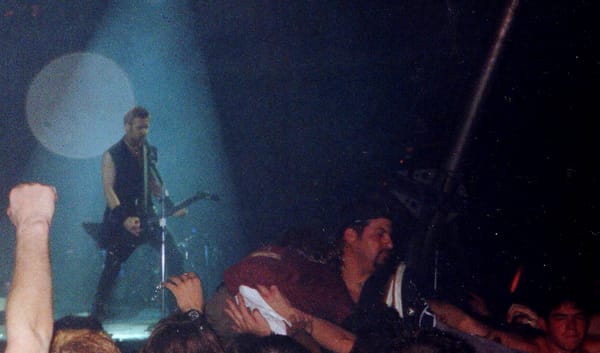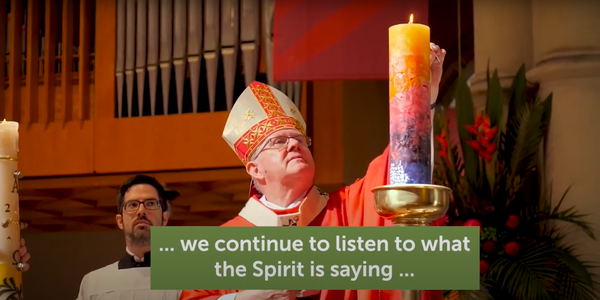Return to the Red Room // A spiritual reading of David Lynch's Twin Peaks
Optimism, affability, self-sacrifice—these alone cannot protect a person from their own shadow.
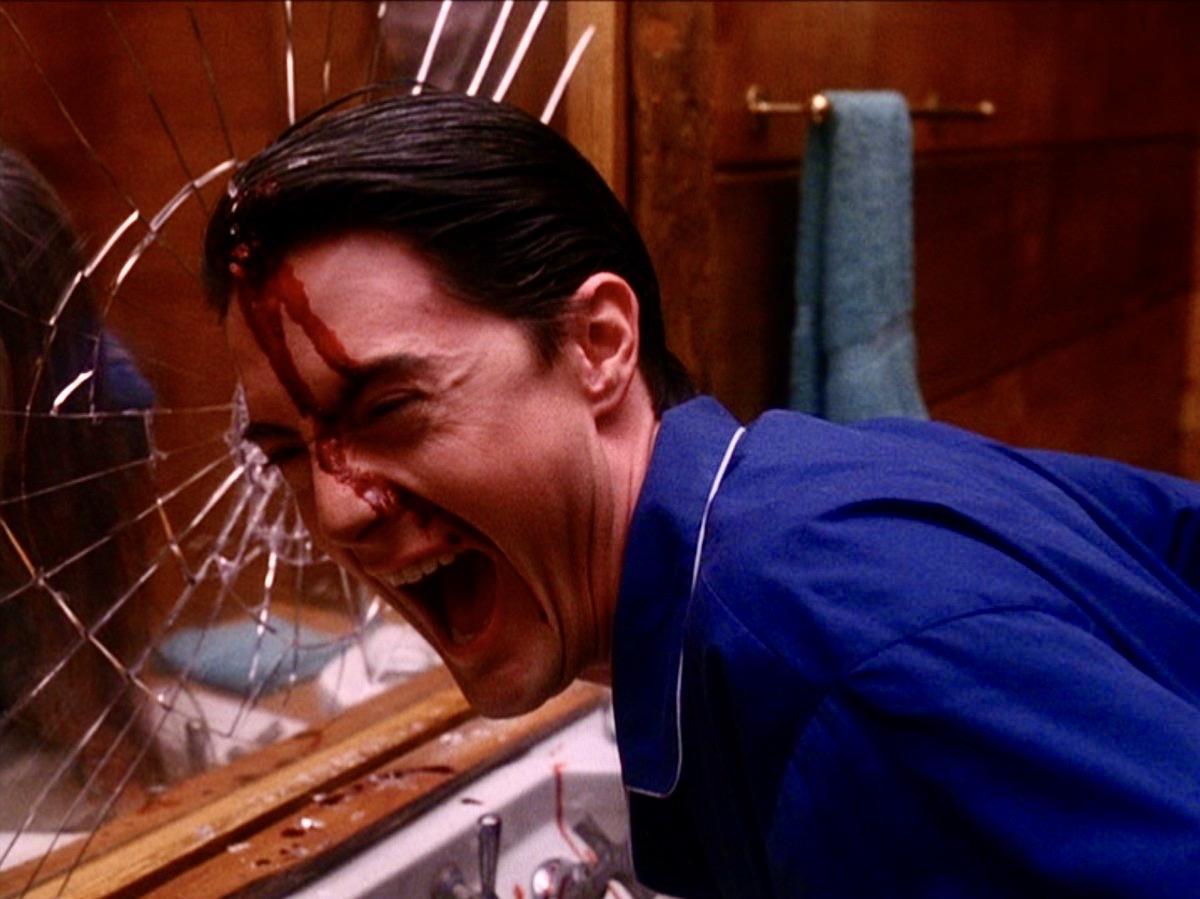
Review: Twin Peaks (1990-) Seasons One and Two—Available on Amazon Prime Video, iTunes.
THIRTY-TWO YEARS AGO, writers David Lynch and Mark Frost introduced us to the seemingly idyllic North American town of Twin Peaks in Washington, the northwesternmost American state. Twin Peaks lasted on television for two seasons, from 1990-1991, and achieved a cult-like status. A prequel film, Twin Peaks: Fire Walk With Me, was released in 1992. Unfettered by conservative television constraints and Frost’s tempering influence, the film was much more Lynchian in style. That is to say, it was surreal and visceral in a way that many viewers—apart from diehard Lynch fans—did not find appealing. Twenty-five years after its cliffhanger series finale, in 2017, Twin Peaks: The Return aired on Showtime, which continued the story of many of the show’s main characters. This third season, which once again was very different in tone from the first two seasons and the film, was received with general acclaim and ended on another cliffhanger. This has fuelled speculation that Lynch would one day return to write and direct a fourth season, but the director is often evasive about this topic when asked.
Twin Peaks falls somewhere between the soap-opera drama and thriller genres. Its atmosphere rapidly (and, surprisingly, very neatly) alternates between a brooding, dark ambience and lighter, comedic tone, both of which are the result of masterful cinematography and a brilliant score by (the recently reposed) Angelo Badalamenti, not to mention excellent writing. The writing is completely unconventional. The main plot thread, if viewed on its own terms, is straightforward enough, and I will proceed to give a summary of it, focusing thereafter mainly on some of the spiritual themes the show addresses in its first two seasons. I will interpret these themes—which the writers drew from ancient paganism and some elements of the new age movement and UFO phenomenon— from a Christian perspective, and will focus on how they relate to the fate of the show's protagonist, FBI special agent Dale Cooper. (Indeed, the third season adds a whole new layer to the possibility of interpreting the show from a Christian point of view, but there is no room to address it here.)
Laura Palmer, an attractive high school beauty queen is found murdered in a small community where everybody knows one another. She was, as the famous line uttered by one the series’ most eccentric characters, Pete Martell, “dead, wrapped in plastic.” This sends a wave of grief throughout the various social strata of the town, and Dale Cooper is sent to investigate. However, episode by episode, the show’s creators unveil the rich tapestry of a narrative which is intelligent, imaginative, and full of surprises. For example, contrary to the innocent portrayal of her given at the beginning of the series, Laura Palmer is gradually (and, since she’s dead, retrospectively) shown to have been a tragic figure, tormented by a series of events that are progressively revealed as leading to her involvement in drugs and prostitution just before her death.
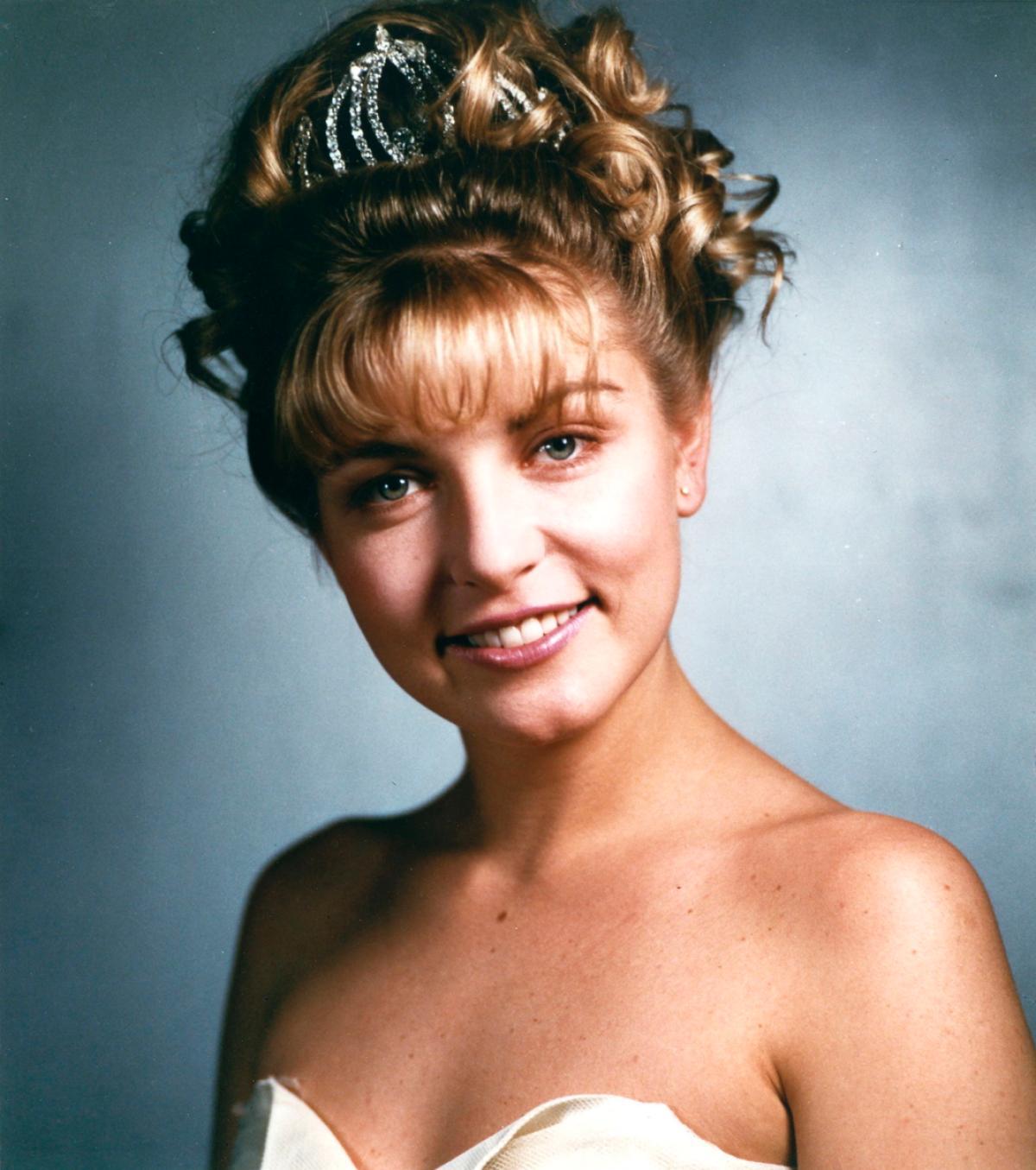
Dale Cooper, with his professional attire and sleek, combed-back hair, looks every bit the no-nonsense lawman. But the writers overturn this stereotype by giving him a genuinely open, free-spirited temperament. This we slowly come to learn is tied up with his interest in Tibetan mysticism and other forms of esotericism, including dream interpretation (influences from Jungian psychology are evident). Indeed, he generally accepts anything “wonderful and strange.” In this way Cooper represents one of the very first detectives in the medium of film to combine logical deduction with spiritual insight, something which Mark Frost explained as a synthesis between the famous fictional sleuth Sherlock Holmes and his esoteric/spiritualist creator, Sir Arthur Conan Doyle. Cooper thus foreshadowed Fox Mulder (played by David Duchovny, who also appears in Twin Peaks) and a whole host of other ‘new-age’ investigators that have appeared on our screens in recent years. But whereas Mulder generally had a bleak disposition, Cooper almost always remained serene and joyful. His quirks, such as an obsessive love for black coffee and cherry pie—apart from serving to highlight the ‘small town’ context—enhance the character’s multifaceted personality, a personality marked by clever witticisms and frequent soliloquies into a dictaphone. The latter are addressed to a mysterious woman named ‘Diane’ who we never see on screen. (She is revealed, for the first time, in 2017’s third season, and is played by Lynch’s often-time muse Laura Dern.)
Cooper joins forces with the local sheriff Harry S. Truman—named after the 33rd president of the United States—who does in fact typify that ‘no-nonsense’ lawman mentioned above. His deputy, Andy, is a dim-witted character, who serves as comic relief but who also has certain profound moments. They are joined by Hawk, a native American Indian tracker, and various other characters that assist in solving the murder of Laura Palmer. These include her closest friends Donna Hayward and James Hurley, Laura’s cousin Maddy—played by the same actress who played Laura, Sheryl Lee—and the seductive Audrey Horne, daughter of local business mogul Benjamin Horne. Lynch always considered the death of Laura Palmer as the central theme of Twin Peaks, so much so that he openly affirmed his disappointment with the revelation of Laura’s killer in the middle of the second season. This, he claimed, was imposed upon the writers by the network in response to low ratings and led to a further decline in viewership. However, I think that by this stage the show—which dipped a little in quality immediately after the resolution of the Laura Palmer case—quickly recovered, gathering enough momentum to sustain itself well beyond it. Twin Peaks had established some very interesting characters, all with their idiosyncrasies, motives, and love interests. Lynch and Frost had created a world which, though innocuous on the surface, was filled with all sorts of mischievous—even evil—characters seeking to manipulate the town and its inhabitants.
The town of Twin Peaks as microcosm
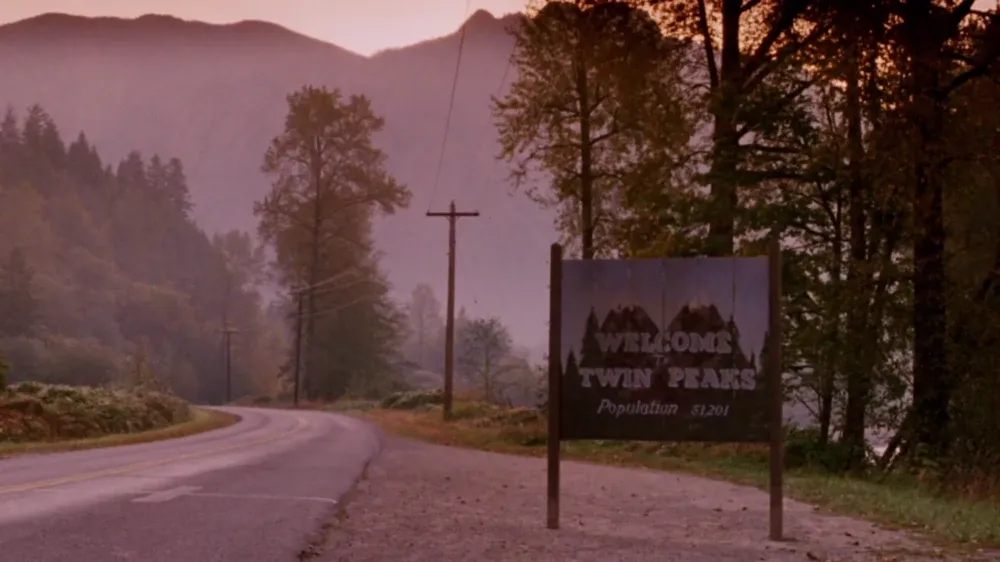
It is to the town and its inhabitants that we now turn. For Twin Peaks does in a sense represent a microcosm, a miniature universe, and this is made clearer as layer upon layer is added to the show’s mythology. There is a scene where, just before Cooper is inducted into the local secret society—the ‘Bookhouse Boys’—he is made aware of the darkness that lurks in the surrounding forest, which is named, aptly enough, “Ghostwood.” The Bookhouse Boys, made up of Truman, his deputy, and some other main characters, had sworn to protect the town from this unidentifiable evil. In ancient societies such as Mesopotamia, Egypt, etc, urban centres or towns, insofar as they were ordered according to certain cosmic patterns, were viewed as a reflection or indeed as an incarnation of the universe. This sense of order, maintained by the constant propitiation of the gods, was perceived as tangibly manifested in various ways: in agricultural undertakings conditioned by seasonal and astrological factors, and in the process of temple construction which was somehow dependent upon a priest’s ability to align its dimensions with the stars, just to name a few examples. Everything that existed outside of this ordered realm, however, was considered to comprise a state of chaos, including what was perceived to be inchoate nature. I propose that the small town of Twin Peaks can be interpreted in a similar fashion. Although set in the 90s, the town is deliberately depicted as isolated from the rest of the world, with the appropriation of many themes from the 1950s—jazz music, a classic diner and jukebox, and the utilisation of the femme fatale motif—all these things give the impression that Twin Peaks is an ordered, timeless whole, unsullied by contemporary societal evils. However, that the town is encircled by the chaotic forces that dwell in the forest, as hinted at by the Bookhouse Boys, is made emphatically clear when deputy Hawk recounts a Native American Indian legend that elaborates upon the Twin Peaks mythos and universe:
My people believe that the White Lodge is a place where the spirits that rule man and nature here reside. There is also a legend of a place called the Black Lodge ... the shadow-self of the White Lodge. The legend says that every spirit must pass through there on the way to perfection. There, you will meet your own shadow-self. My people call it ‘The Dweller on the Threshold.’ But it is said, if you confront the Black Lodge with imperfect courage, it will utterly annihilate your soul.
These two realms, the White and the Black Lodges, are central to the Twin Peaks mythos and frame its cosmos. In the dossier-style novel by Mark Frost, The Secret History of Twin Peaks, published in preparation for the third season before it aired in 2017, the White and Black Lodges are described as originally having an extra-terrestrial origin before being localised in certain places on earth, including in Twin Peaks. However, in both the show and the novel spiritual realities and alien ones are conflated, and it remains possible to interpret these ‘places’ purely from a spiritual point of view. The White Lodge is a sort of paradise, inhabited by benevolent beings, where the pure of heart experience a sort of apotheosis. In this sense it corresponds to the Elysian fields in Greek mythology. But it can also simply be viewed as ‘heaven’ in a general sense. And despite common misconceptions of heaven as a state that can only be experienced posthumously, the White Lodge can in fact be experienced, as a foretaste, in the here-and-now by the pure of heart: much like the kingdom of heaven in Roman Catholic and Orthodox Christian mysticism. This is exemplified in the experience of Major Garland Briggs, who was taken to the White Lodge while still alive, and seemingly bypasses the Black Lodge altogether. An early Christian writer, Gregory of Nyssa, affirms that the same thing can be said of the saints: they have no need of purgation but, upon death, are transferred to heaven by God immediately. The Black Lodge, as described by Hawk above, can be likened to the medieval representation of purgatory, a state which the Catholic Church affirms precedes the experience of heaven for those deceased persons who need to be purged of their sins. But it also resonates with the medieval legends concerning the spiritual toll gates that the souls of the departed had to pass on their way to heaven. These tolls were occupied by demons which tested souls before they could progress to the next stage of their journey.
Although initially difficult to ascertain, it is made clear by the end of the series that the Black and White lodges can be experienced both intra- and extra-mentally. Taking a cue from H. P. Lovecraft’s The Call of Cthulhu—where ancient chthonic entities telepathically affect sensitive humans on earth—these places are depicted as in a sense ‘living,’ communicating to the townsfolk in various ways. One way that the Lodges affect the townsfolk is via the subconscious during sleep, as demonstrated by Briggs’ dream experience where he recounts a peaceful reconciliation with his rebellious son, Bobby. This positive example would have emanated from the White Lodge. One of the ways that the Black Lodge affects the town's inhabitants is via the possession of some of the town's inhabitants—including its native wildlife, specifically owls—by the evil entities emanating from there. I will say more about this below, but the evil figures in the Black Lodge appear to certain ‘sensitives’ (like agent Cooper) when some of the town's inhabitants experience terrible fear and suffering—this gives them sustenance (and is represented symbolically in both the show and the film, Fire Walk With Me, as creamed corn—a substance called “garmonbozia.”) And in the penultimate episode, the catastrophe that will ensue in the finale is foreboded by tremulations that affect the hands of several townspeople, including agent Cooper, thus indicating once again the Black Lodge’s effect on the town.
Perhaps the most important way that the Lodges affects human beings is through dreams, specifically in agent Cooper’s dream of the Red Room, which was later revealed to be a neutral zone between the two lodges. That the lodges have an extra-mental existence is manifested in the last episode of the series, when Cooper physically enters the Red Room. Indeed, the Red Room sequences are among the most iconic in the show, constituting the locus and source for the main spiritual experiences of the characters. It is on the Room, and the Lodges, that the rest of this article focuses.
The Darkness of Future Past
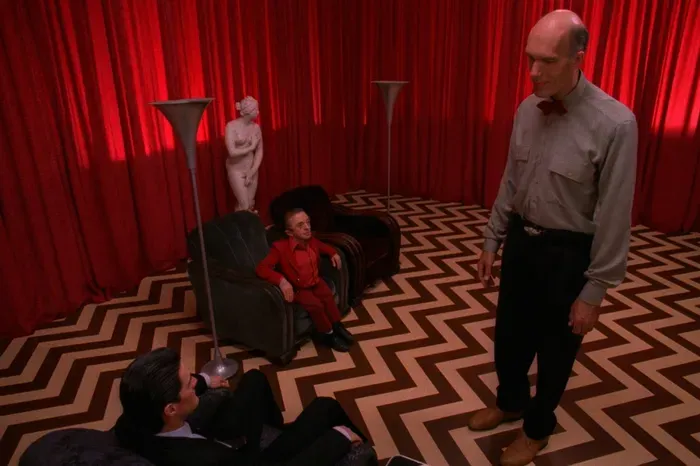
Within the Red Room’s confines, time and space as we know and experience them have little significance. This is made clear by the stunted speech and erratic movements of its permanent inhabitants, malevolent entities like Bob and angelic ones like the Giant, who in season two, episode one (entitled “May the Giant Be with You”), Dale encountered when he was wounded by a gunshot (presumably, at the threshold of death, Cooper had entered the White Lodge). Constituting both an entry to and exit from the lodges, the Red Room is the vantage point from which these spiritual entities cross over into the town of Twin Peaks.
As noted, we are made familiar with several such entities. The principal figure is Bob, who hails from the Black Lodge and is purely evil. Clad in denim and boasting long, dirty-greyish hair, Bob is an anthropomorphic representation of a demonic spirit intent on wreaking havoc upon the town. As the story unfolds, we discover that Bob had infrequently possessed Laura Palmer’s father, Leland, who had ‘invited him in,’ so to speak, when he was a child. Bob, through Leland’s reluctant agency, raped and murdered several women (both within and outside Twin Peaks) including Laura, with the help of another spirit, the so-called Man from Another Place. This spirit, in his disembodied state, appears as a dwarf in Cooper’s visions of the Red Room, where they are usually seated next to each other. Moreover, the Man from Another Place also has an agent through which he did his dirty work in the real world, implying that these spirits needed vessels in order to enter Twin Peaks. His vessel was local shoe salesman Philip Michael Gerard, also called Mike or the One-Armed Man—in fact the Man from Another Place is identified with the missing ‘arm’—and together he and Bob/Leland murdered several women before the former repented after “seeing the face of God.” This ‘repentant demon’ then tried to stop his one-time partner, Bob, severing his own arm, which became the Man from Another Place—an entity that sometimes still possesses Mike—and who remains more or less a malevolent presence in the show and film.
All of this is fleshed out in the series’ various episodes and in the feature film Fire Walk With Me. For now, let us focus on the oft’ recited poem containing the above phrase and first uttered to Cooper by the One-Armed Man/Mike, as the former slept and preceding Cooper’s vision of the Red Room:
Through the darkness of future past, The magician longs to see, One chants out between two worlds, Fire walk with me.
Although Frost's The Secret History of Twin Peaks links this poem to the notorious occultist Aleister Crowley’s Thelemite movement in an attempt to demonstrate that evil men had tried to access the Black Lodge even before the events in Twin Peaks, the poem can in fact be analysed in various ways. The “darkness of future past” could mean the distortion of time. This is a recurrent theme in the show, where the Red Room distorts time and retrojects images of the future into the past, specifically into the minds and dreams of sensitive recipients. This is what Laura Palmer experiences in Fire Walk With Me when she dreams of Dale Cooper, whom she had never met and who would eventually be tasked with solving her murder. Moreover, the Man from Another Place and Laura communicate to Cooper in the third episode of season one, entitled “Rest in Pain,” when Dale visits the Red Room in a dream. In this space, Dale is visibly aged, and people communicate in reverse, or rather their gestures are reversed as they communicate in a disjointed way. This indicates the distortion or collapsing of time and space, as well as the possibility of divining the future, for, as the Man from Another Place tells Cooper—“that gum you like is going to come back in style.”
The magician is probably Cooper. As we saw above, he uses Tibetan magic in his investigative technique and he “longs to see” both what happened to Laura and, as the show progresses, what happened to his love interest, Annie Blackburn. Annie is introduced in the show’s second season along with Cooper’s nemesis, former FBI agent Windom Earle. She is eventually kidnapped by Earle, who is obsessed with the Black Lodge, and is taken to the Red Room and Lodge in the second series’ final episode, “Beyond Life and Death.” The one who “chants out” from “between two worlds,” which can be interpreted as either between the White Lodge and the Black Lodge—in other words, the Red Room—or from between our world and the next, is Bob. His saying, “Fire walk with me” can be viewed as an invitation to hell, which, through his vessel, Leland Palmer, he wrought upon Laura whose doppelgänger now resides in the Red Room.
The phenomenon of doppelgängers, a German word meaning ‘double-goer,’ is terrifyingly explored in Twin Peaks. A subject of folklore, which usually posits that if someone sees an apparition of their double they will soon die, it is here reversed in line with Hawke’s description of the Black Lodge as a sort of purgatory that “every spirit must pass on the way to perfection.” It is here that they meet their shadow-self, the so-called “Dweller on the Threshold.” As Hawke stipulates, if not confronted with perfect courage, one’s doppelgänger will destroy their soul. Even without any mention of controversial ‘toll gates’ in certain Christian afterlife texts—where one’s soul encounters the demons that govern certain passions and is held to account by them in a sort of juridical way—this belief eerily evokes the general Christian hagiographical consensus regarding the soul’s immediate experience of the afterlife upon departing this world. That is that the soul, upon leaving the body, encounters demons that expose it to its sins and passions in order to terrify it from entering heaven. In hagiographical texts, any courage that one takes with them in death is associated with the all-powerful name of Jesus, “the name which is above every other name” (Philippians 2:9), that, as the Son of God, contains his protective divine grace. It is by praying to him (or by being prayed over by a priest), and, with the assistance of Christ's angels and the saints, that the soul can escape the snares of the demons and travel safely to the kingdom of heaven.
In Twin Peaks, the protagonists have no recourse to such divine protective agency. Instead, in “Beyond Life and Death,” ex-FBI agent Windom Earle, who discovered the existence of the Black Lodge when working on Project Blue Book—which was set up by the United States Air Force in 1969 to examine unidentified flying objects or UFOs (yes, it really existed, and is explored extensively in Frost’s Secret History)—selfishly desires to harness the Lodge’s dark power. While taunting Cooper since his arrival in Twin Peaks, Earle’s real interest is in the Black Lodge, which he believes he can enter by inducing fear, an emotion upon which entities like Bob thrive. To this end, he abducts Annie at a beauty pageant and takes her to the Lodge in the middle of the night, compelling Cooper to pursue them there. The conflation of spiritual and alien beings, alluded to by Earle’s association with Project Blue Book, draws upon fringe scientific theories such as those suggested by Erich vön Danichen in his Chariots of the Gods? Unsolved Mysteries of the Past, which posits that the earliest religions and ancient technologies were introduced to human beings by alien astronauts. While a fruitful topic in science fiction, popularised by Arthur C. Clarke’s 2001: A Space Odyssey, it is strangely taken seriously, and condemned, by Christian fundamentalists like Fr Seraphim Rose in pamphlets based on his sermons and writings (such as UFOs: The Demonic Connection).
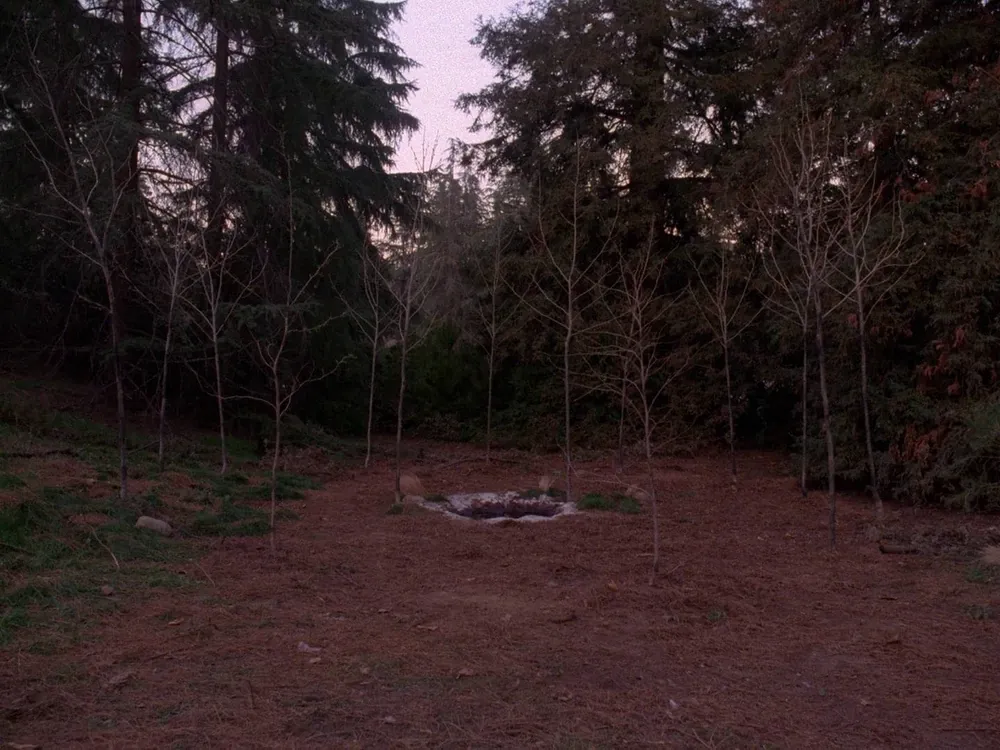
Cooper takes the bait and enters the Red Room through a circular stand of twelve sycamore trees, in the centre of which is a rocky pool containing a black, oily substance. The smell of burnt oil is associated in the series with the presence of Bob, just like demons and sulfur in Christian folklore. This place is known as Glastonbury Grove, and under certain conditions curtains appear over the oily substance that allow one to enter the Red Room, or, in Cooper’s case, both the Red Room and the Black Lodge. Glastonbury is a town in Somerset, England, which is famously associated with various religious and legendary figures including St Joseph of Arimathea and King Arthur, as well as holy artefacts such as the Holy Grail, the cup that Christ drank from at the Last Supper that contained the wine transformed into his blood. The Grail is of course part and parcel of Arthurian lore, since the King commanded his knights to go on a quest to find it in order to stabilise his ailing realm. Indeed, Glastonbury Abbey is said to have been built over the place where Josephus placed the Holy Grail, and it is said that when Josephus disembarked there, he set his staff into the ground which flowered miraculously into the Glastonbury Thorn (a Hawthorn tree). Glastonbury has also been associated, in recent years, with the New Age movement and with a popular music festival. The fact that Glastonbury Grove in Twin Peaks comprises the entrance to another world betrays some sort of influence of Glastonbury, England, on the writers—indeed when this place is mentioned in the last episode of the show, Cooper immediately makes the connection with King Arthur’s burial place. The round table of Camelot could also have been hinted at by the circular arrangement of the trees, except that instead of being associated with a Christian kingdom or Christian sentiments of heaven, in the show the portal is gateway to purgatory, or, given what we are about to expound about Cooper’s experience therein below—a gateway to hell.
Cooper pursues Windom Earle into the Red Room, where once again he is seated next to the Man from Another Place who offers him coffee. Laura’s double appears, making strange gestures and stating eerily to Dale that she will see him again in twenty-five years, a prophecy that is fulfilled in Twin Peaks: The Return. An elderly waiter from The Great Northern, the hotel at which Cooper is staying, appears with coffee which changes consistency three times, denoting the malleability of matter in this space. The waiter is then replaced by the Giant, who says “one and the same,” implying that the elderly waiter was his vessel in the town (he was there when Dale was shot and encountered the Giant for the first time). The Man from Another Place then says “Fire walk with me,” at which point an explosion of fire is seen and the room turns dark. Cooper passes through several curtains, all of which lead to a hallway and a duplicate of the Red Room. He encounters a double of Maddy, Laura’s cousin—also murdered by Leland—who warns Dale to watch out for Laura. At this point, it is clear that the Red Room and the Black Lodge contain the doubles of murder victims also. Later, Leland Palmer also appears, along with Windom Earle’s murdered wife, Caroline, with whom we are told Dale had an affair before Earle stabbed the lovers, killing his wife in the process.
Cooper descends further and further into what is clearly now the Black Lodge. Lights flash in the darkness as Laura’s doppelgänger appears, screaming ferociously at Dale. He backs away into another room, descending further in the Lodge as he begins to spontaneously bleed from his stomach. Leaving a trail of blood as he limps through the corridor separating the ‘levels’ of descent into the Lodge, he sees Caroline—Earle’s wife and his ex-lover—on the floor next to his own wounded body. Here, time is being distorted, and Cooper is made to experience Caroline’s death (and his wound) all over again. He calls out to her, but she sits up and transforms into Annie as the room goes dark and the bodies disappear.
Next, Cooper walks into another room and encounters Annie, who says that the man who killed her was her husband. Cooper is baffled as Annie transforms into Caroline and finally into Windom Earle. Windom tells Cooper that he will let Annie live if Cooper gives Windom his soul. Cooper self-sacrificially agrees, and Earle stabs him—but the stabbing is reversed as Bob appears in a flash of fire behind Earle, gripping him violently. Earle screams in fear as the scene becomes truly terrifying. Bob exclaims that Cooper “go!” He says Earle cannot ask for his soul, and then proceeds to extract Earle’s soul in a horrific manner. Fire, a manifestation of his soul, erupts from Earle’s head and is captured by Bob. Earle falls limp, dead, and Bob laughs maniacally as Cooper’s double emerges from the curtains behind him, following the real Cooper out of the Lodge. The real Cooper makes a run for it and is caught by his double just before he exits the Lodge. Bob then appears, facing the viewer, laughing menacingly.
Back in Twin Peaks, the gateway to the Lodge, a red curtain, flashes in the night as sheriff Truman discovers Cooper and Annie lying among Glastonbury Grove’s sycamore trees. In the next scene, Cooper awakes in a hotel room at The Great Northern, flanked by sheriff Truman and Dr Will Hayward watching over him. Cooper asks, “How’s Annie?” Truman replies that Annie will be fine and that she’s at the hospital. Dale then says, “I need to brush my teeth,” and Truman and Hayward wait for him as he repeats this and enters the bathroom. Inside, Cooper picks up a toothbrush and toothpaste, but he squeezes the latter into the sink before smashing his head into the mirror above the vanity. The scene changes from a close-up of Cooper’s strange facial expression to his head against the broken glass. In the mirror’s reflection, Cooper is nowhere to be seen. Instead, Bob is looking back at him, as Cooper—now clearly revealed to be the doppelgänger from the Black Lodge—head bloodied, begins to repeat, amid short bursts of deranged laughter, “How’s Annie?”
If you gaze into the abyss…
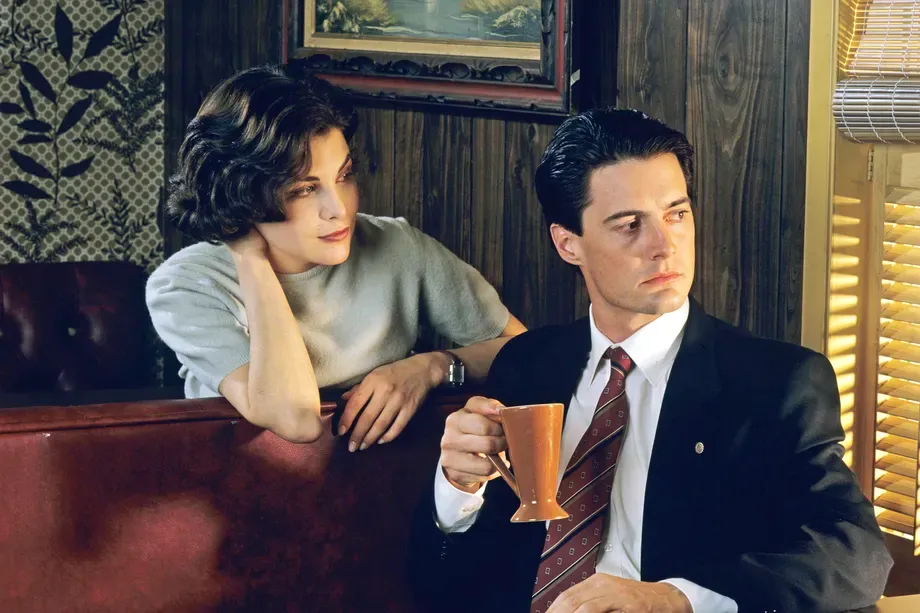
The show therefore ends on a cliffhanger, with the real Dale trapped inside the Black Lodge and his doppelgänger, possessed by the demonic entity, Bob, in the real world. The havoc that the double wreaks in the 25-year interim before the real Dale returns—and meets Laura again—is disclosed in Twin Peaks: The Return. There is no room to explore the third season further here. But for almost three decades the first two seasons, along with the film (and some related publications, like Laura’s journal), were a self-contained unit, and it is in this respect that the analysis in this article has unfolded. For the tragedy of Dale Cooper’s failed descent into hell at the end of the second season comprises a warning, from a spiritual point of view, to all those who would face supernatural evil unprepared. Indeed, Hawk had foreshadowed this when he spoke about the courage needed to face “The Dweller on the Threshold” inside the Black Lodge. And the panoply of horror films that are released today constantly show would-be protagonists fighting against preternatural evil in an almost naïve way, without recourse to help from God or his angels and saints. But this sort of evil, if it exists—and the Christian testimony, along with the testimony of most world religions, is that it does in fact exist—cannot be faced by human beings apart from any divine assistance. The sage advice of Friedrich Nietzsche in his oft’ quoted aphorism rings clear in our ears:
Anyone who fights with monsters should take care that he does not in the process become a monster. And if you gaze for long into an abyss, the abyss gazes back into you.
Dale, for all his optimism, affability—even his willingness to sacrifice his soul to save Annie—was not able protect himself from his own double, or shadow. This shadow can be interpreted as the worst passions and sins of our natures, when the latter was under the influence of the evil spirit, Bob. Cooper’s journey into the Black Lodge is like a modern retelling of the descent into Hades motif, which in classical literature depicted the hero facing their worst fears in the underworld—reaching their existential nadir thereby—and yet overcoming these to come back equipped with the mettle to continue their quest. In classical literature, sometimes the hero succeeded in the underworld, as in the case of Odysseus and Aeneas; and oftentimes he failed, as in the case of Orpheus. But in relation to the former—the gods were on their side! When Christians began to engage with this myth in order to describe the ultimate ordeal faced by their own hero—Jesus Christ—they realised that it was not enough for the Son of God to merely descend into Hades in order to come back transformed to carry on his journey. Jesus is instead the hero par excellence because, in order to accomplish victory over death itself, he entirely subjugates Hades and captures its agents—the devil and his demons—with his resurrection from the dead. It is for this reason that for generations Christians have prayed to Christ and his agents, the angels and saints, to protect them against supernatural evil, which, according to the testimony of Christian mystics, tempts men and women first via thoughts that lead to selfish behaviours. These in turn cause violence against both God and neighbour through sin. In extreme cases, this evil is said to manifest itself directly to the one struggling against it, as we read in the lives of the saints who have—with, and it is an important qualification, Christ’s help—waged spiritual battle against Satan for the sake of their souls and the souls of the faithful.
Dale Cooper, for all his positive qualities, also had shortcomings—passions—that remained unaddressed. These are manifested when the show's writers create a deliberate contrast between the manner in which Cooper investigated the death of Laura Palmer, and his investigation into the reappearance of Windom Earle. In relation to the former, Dale was careful and focused, rebuffing the advances of Audrey Horne—whom he nevertheless had affection for—and, apart from being distracted by the coffee and pie, was single-minded in identifying the killer. When Earle's arrival in Twin Peaks coincides with the appearance of Annie, Cooper becomes distracted. He knows that Earle is threatening the young female protagonists of the show, Donna, Shelley, and Audrey, yet—in spite of the imminent danger to their lives—he begins a courtship with another young woman, Annie, while Earle's shadow loomed over them all. There is symmetry here between Cooper's love affair with Caroline and his love for Annie (which is why they appeared interchangably in the Black Lodge): the former, adulterous dalliance distracted him, destroyed Caroline and left him near-fatally wounded at the hands of Earle. The latter seems to be history repeating itself—and Dale's distraction prompted him to rush headlong, in a rather arrogant, self-confident way, into the Black Lodge without the proper preparation.
Frost's Twin Peaks: The Final Dossier, published after Twin Peaks: The Return aired in 2017 to tie up some loose ends from the show’s first to third seasons and film, explains Cooper’s failings in light of an overcompensating desire to protect women as a sort of ‘knight-in-shining armour.’ This, it explains, is because he took care of his mentally and physically scarred mother as a youngster, but given that these are observations made by the fictional author of the Dossier, FBI Special Agent Tamara Preston—a character who appears in season three—and who admits her own bias might be playing a role in her appraisal of Cooper, then there is no reason why the book's interpretation and mine can’t be complimentary.
In any case, when he entered the Black Lodge, the abyss stared right back at Dale Cooper. Like the demons in the hagiographical texts, it exposed him to his passions and sins—namely by showing him Caroline, with whom he had an affair—and his fears in terms of the mortality of his loved ones, both Caroline and Annie. The Black Lodge then swallowed him whole. In this way, Twin Peaks serves as a powerful metaphor for the risk of not only attempting to directly oppose, but of even engaging with supernatural evil unprepared. As such, it comprises a warning for those wishing to dabble with or actively participate in the occult. Indeed, one can interpret Dale’s fate from both a spiritual and even psychological point of view, as it might be cathartic to face one’s own passions and sins in order to overcome them. In this way, Dale’s dopplegänger can indeed be interpreted as a representation of one’s worst qualities that can and should be faced and overcome.
I would not, however, push the psychological interpretation too far. It has merit, but it is in relation to the dangers of spiritual evil that the show invariably refers. With the latter, it is one thing to read about such things—this can be both informative and formative. But it is quite another to actively engage with them simply out of curiosity, for a cheap thrill, and without God’s help. For one never knows what’s lurking at the threshold of this world and the next, waiting for its opportunity to exploit our naivety, and our sins, to our own destruction—the way that Bob exploited the naivety of Dale Cooper, and the passions of the inhabitants of Twin Peaks. If we are ever to find ourselves in a precarious spiritual situation, it is my sincere belief that it is only the name of Jesus that can assist us. 👁️



